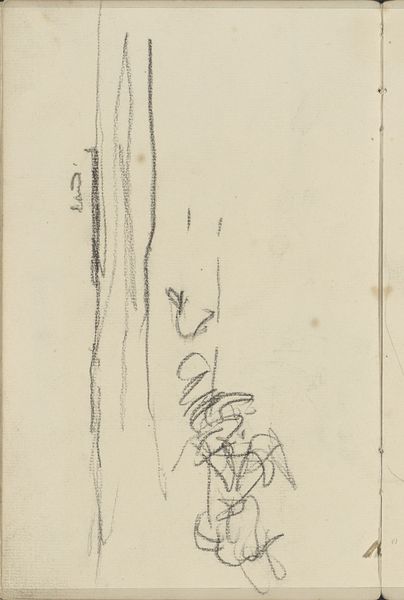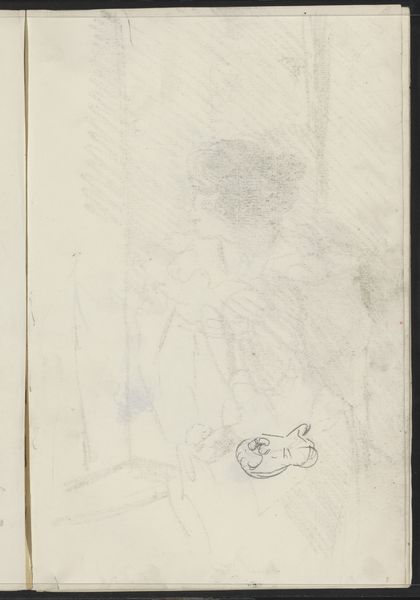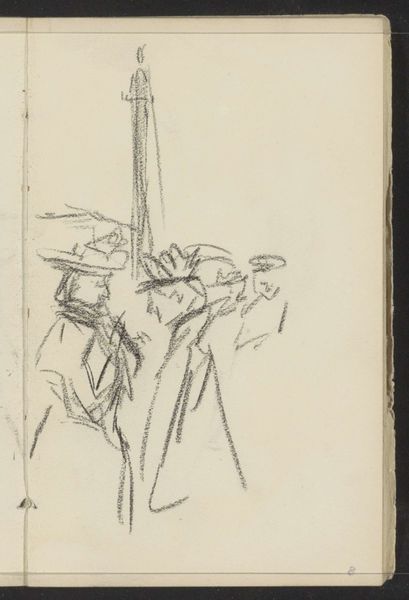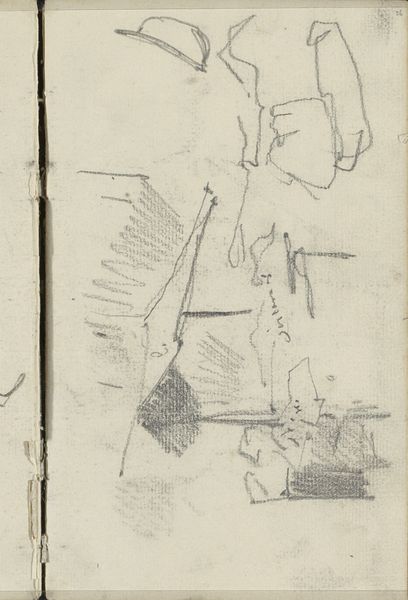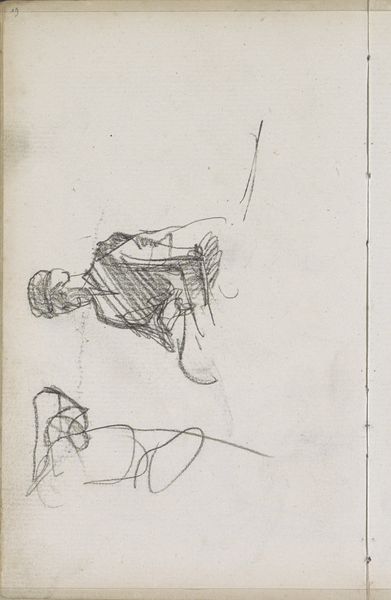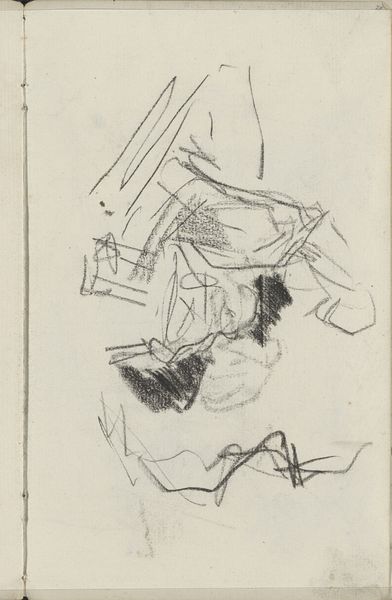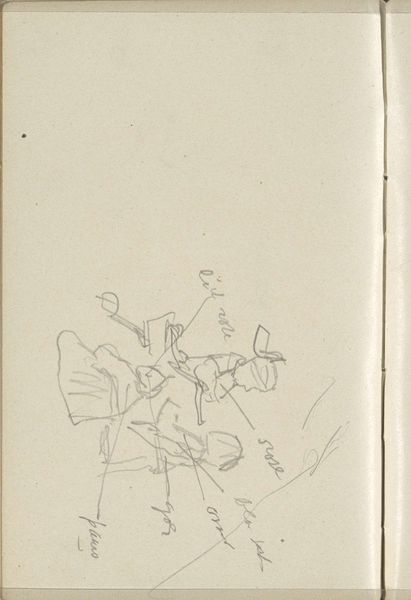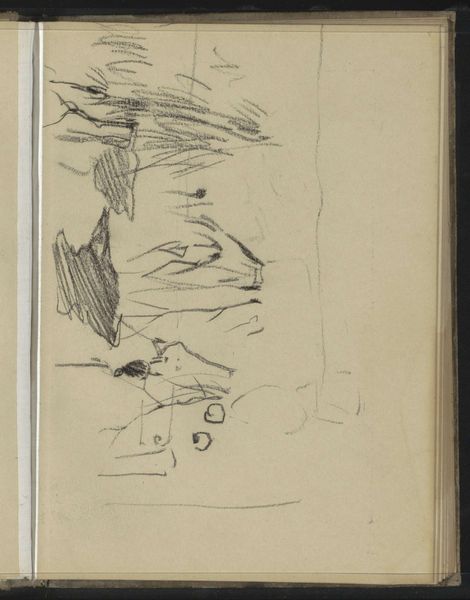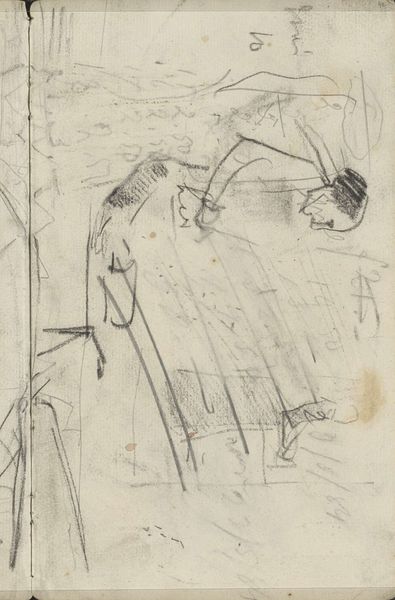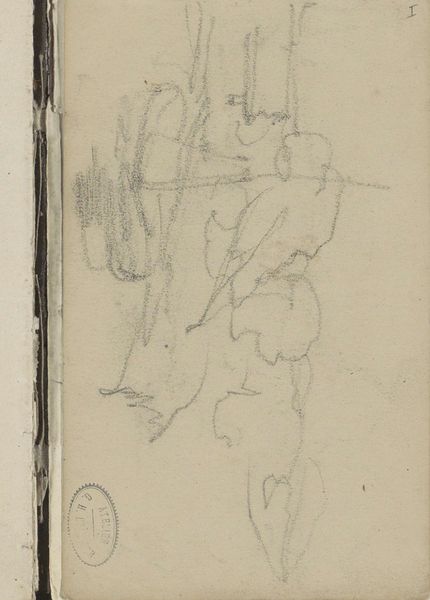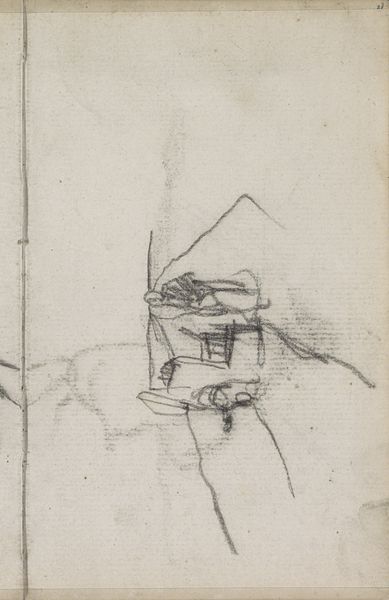
Copyright: Rijks Museum: Open Domain
Editor: This small drawing, "Twee mannenhoofden" – "Two Men's Heads" – by George Hendrik Breitner, made sometime between 1886 and 1903, is rendered in pencil on toned paper. It's intriguing – almost feels like a fleeting thought captured on paper. What do you see in this piece, considering Breitner’s focus? Curator: It's a peek into Breitner's process, isn’t it? Looking at this, I’m struck by the accessibility of the materials – paper and pencil. How does this everydayness, this ease of production, shape our understanding of "art" versus, say, commercial illustration of the period? Consider the labor involved; it’s quick, gestural. It speaks to an immediacy of capturing observations, but for what purpose? A quick sketch, or a potential resource? Editor: That's interesting – so, rather than focusing on the finished product, we're thinking about the act of making itself and how it challenges art world hierarchies? Curator: Precisely! We have to question the relationship between the artist's labor, the inherent value we ascribe to 'fine art' sketches versus other forms of drawing from this era, and the systems that validate them. Were these men part of Breitner's social circle or merely subjects observed for later works? How does that context shift our understanding of the drawing's significance? What do you think? Editor: It definitely changes how I view it. Knowing it might be a study changes my perception from art object to a record of observation. Curator: Exactly. That distinction informs how we understand Breitner's engagement with his subject matter, and it’s crucial to dismantling traditional notions of artistic genius as something separate from everyday production. This isn't just about the skill of the hand; it's about the entire material and social network within which the artwork exists. Editor: I see – focusing on the materials and process makes me think about who had access to these materials and the implications for art history in general. Thank you.
Comments
No comments
Be the first to comment and join the conversation on the ultimate creative platform.
